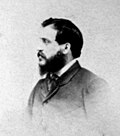Plik:Secundra Bagh after Indian Mutiny.jpg
Wygląd
Secundra_Bagh_after_Indian_Mutiny.jpg (500 × 391 pikseli, rozmiar pliku: 78 KB, typ MIME: image/jpeg)
Historia pliku
Kliknij na datę/czas, aby zobaczyć, jak plik wyglądał w tym czasie.
| Data i czas | Miniatura | Wymiary | Użytkownik | Opis | |
|---|---|---|---|---|---|
| aktualny | 18:16, 20 mar 2006 |  | 500 × 391 (78 KB) | Pinkville | Reverted to earlier revision |
| 22:18, 11 mar 2006 |  | 496 × 379 (58 KB) | Anton~commonswiki | Gray level adapted. (see discussion) | |
| 19:29, 27 paź 2005 |  | 500 × 391 (78 KB) | Dbenbenn | Reverted to earlier revision | |
| 23:40, 26 paź 2005 |  | 299 × 234 (22 KB) | Jose montalvo~commonswiki | fuente: Wikipedia en ingles - dominio publico | |
| 00:10, 19 sty 2005 |  | 500 × 391 (78 KB) | Weft | {{PD}} |
Lokalne wykorzystanie pliku
Poniższa strona korzysta z tego pliku:
Globalne wykorzystanie pliku
Ten plik jest wykorzystywany także w innych projektach wiki:
- Wykorzystanie na as.wikipedia.org
- Wykorzystanie na ba.wikipedia.org
- Wykorzystanie na bn.wikipedia.org
- Wykorzystanie na ca.wikipedia.org
- Wykorzystanie na de.wikipedia.org
- Wykorzystanie na eo.wikipedia.org
- Wykorzystanie na fr.wikipedia.org
- Wykorzystanie na fr.wikibooks.org
- Wykorzystanie na hy.wikipedia.org
- Wykorzystanie na it.wikipedia.org
- Wykorzystanie na ja.wikipedia.org
- Wykorzystanie na kn.wikipedia.org
- Wykorzystanie na lb.wikipedia.org
- Wykorzystanie na nn.wikipedia.org
- Wykorzystanie na pt.wikipedia.org
- Wykorzystanie na ru.wikipedia.org
- Wykorzystanie na sv.wikipedia.org









